
Principles of Haemodynamics (Physiology)
Session Summary Two important ideas concerning blood flow will be presented, these are Darcy’s law and Bernoulli’s law. This lecture will focus particularly on how blood flow changes across the circulation and how this is critical in the functioning of the cardiovascular system. Learning outcomes At the end of this session you will be able to: Outline Darcy’s and Bernoulli’s laws of blood flow. Explain how blood flow is determined by arterial blood pressure and resistance Understand the relationship between flow, velocity and cross sectional area Describe laminar, turbulent and bolus flow Describe the arterial pressure profile through the circulation Outline the features of pulse pressure – stroke volume and compliance
-
A picture demonstrating blood pressure stages:
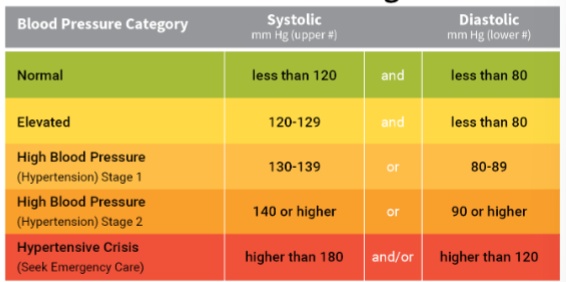
-
What is Haemodynamics?
Is the relationship between blood flow, blood pressure and resistance to flow
-
What does Force refer to?
Cardiac contraction
-
What does work refer to?
Isovolumetric contraction and ejection
-
What does pressure refer to?
Difference of pressure between the aorta to veins
-
What does compliance refer to?
Arterial stretch
-
What does resistance refer to?
Arterioles
-
What does Flow velocity refer to?
Slowing down blood flow in capillaries
-
What does CVS stand for in haemodynamics?
Cardiovascular System
-
Reduced blood flow to one area in the CVS will increase what?
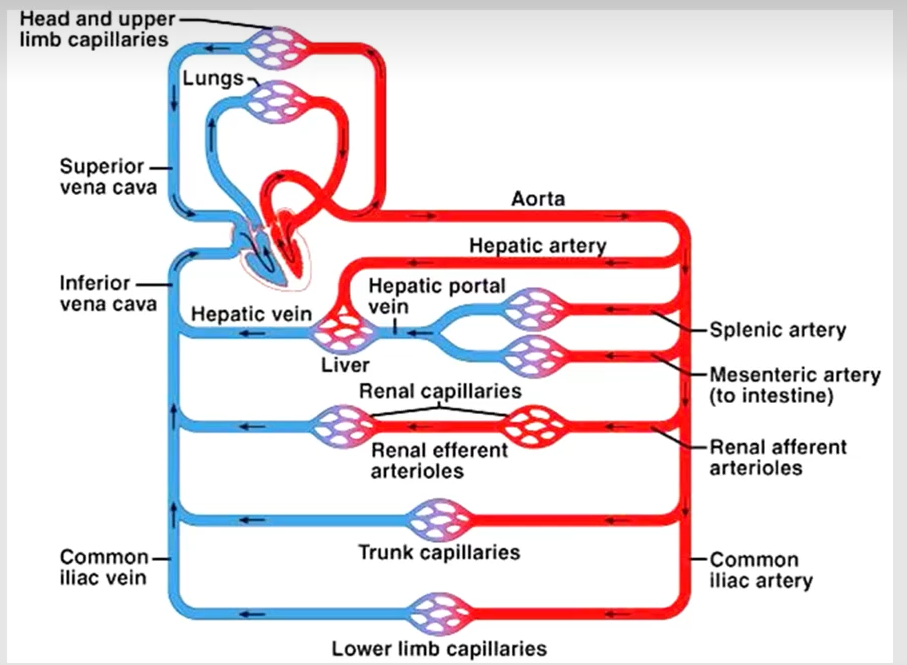
Pressure upstream and alters flow to other areas
-
Where is the majority of blood kept? (what system)
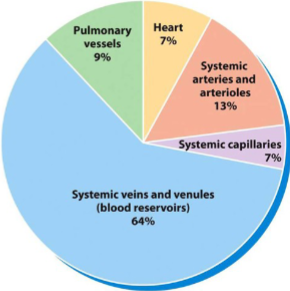
The venous system
-
What is a characteristic of the venous system?
A low pressure system
-
The reservoir of venous blood can be used to increase what? What Law refers to this?
-Increase Cardiac Input
-Starlings Law
-
What is the Pulmonary circuit responsible for?
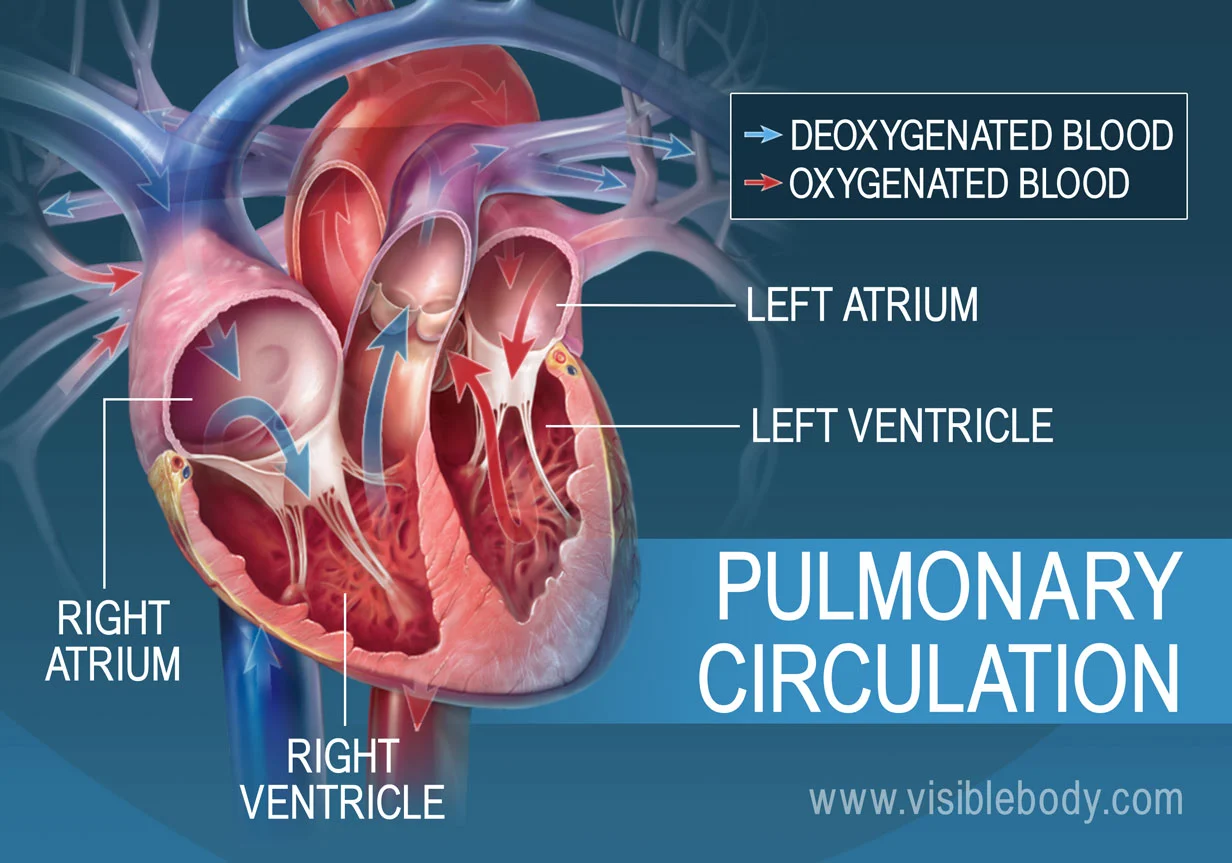
Is responsible for carrying blood between the heart and the lungs
-
What is the Systemic circuit responsible for?
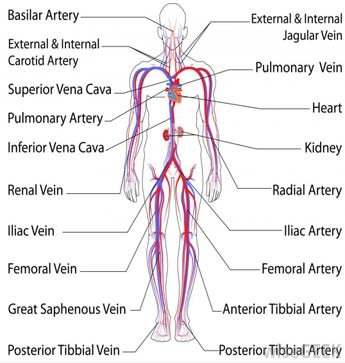
Is responsible for carrying blood between the heart and the rest of the body's tissues and organs
-
Picture demonstrating pressure changes and drops in the pulmonary and systemic circuits:
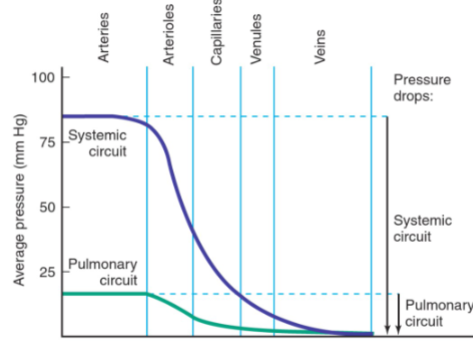
-
What does Darcy's Law describe?
The flow of fluid through a porous medium, such as blood flowing through blood vessels
-
What does the Bernoulli's Principle state?
In a flowing fluid, an increase in the speed of the fluid occurs simultaneously with a decrease in pressure or a decrease in the fluid's potential energy
-
What is an equation for Flow that involves R (resistance)?

Flow = P1-P2/R
-
What is an equation for Flow that involves TPR (Total Peripheral Resistance)?
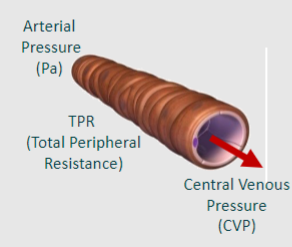
Flow = Pa-CVP/TPR
-
What is an equation for Flow that involves kinetics?
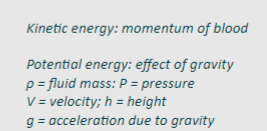
Flow = Pressure (P) + Kinetic (pV^2/2) + Potential (pgh)
-
What is the definition of blood flow?
Volume of blood flowing in a given time (ml/min)
-
What is the definition of perfusion?
Blood flow per given mass of tissue (ml/min/g)
-
What is the definition of the Velocity of blood flow?
Blood flow (cm/s) affected by the cross-sectional area throughwhich the blood flows, so flow may remain the same but velocity changes if there has been a change in cross-sectional area
-
What is the equation for volume flow (Q)?
Volume Flow (Q) = Velocity (V) x Area (A)
-
What is the equation for velocity (V) that involves Flow?
Velocity (V) = Flow/Area
-
The greater the cross-sectional area...........
The slower the flow
-
Does the branching of arteries slow velocity?
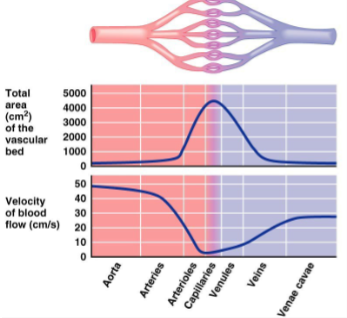
Yes
-
Is the Velocity of blood flow in the aorta high or low?
High
-
Where is Laminar flow the most prevalent in? (4)
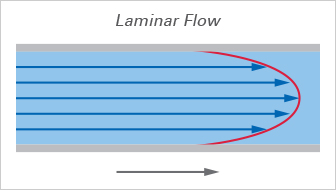
-Most arteries
-Arterioles
-Venules
-Veins
-
What are the characteristics of Laminar Flow? (5)
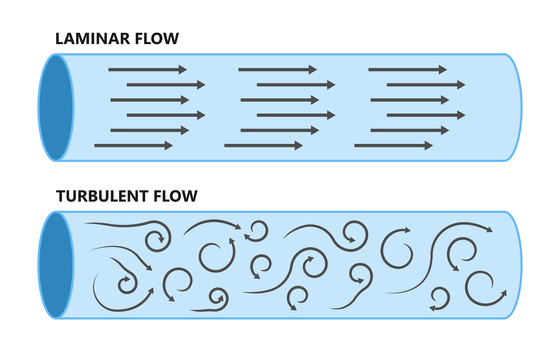
-Concentric shells
-Zero velocity at walls (molecular interactions)
-Maximum velocity at centre
-Moves RBCs towards centre
-Speeds up blood flow through narrow vessels
-
Where is Turbulent flow the most prevalent in? (3)
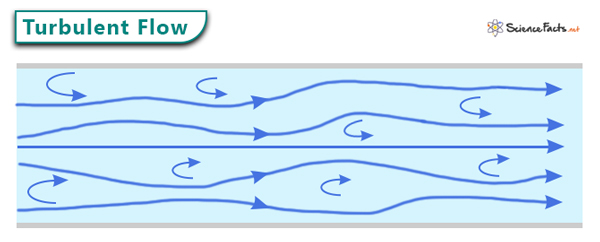
-Ventricles (mixing)-Aorta (peak flow)-Atheroma (bruits)
-
What are the characteristics of Turbulent Flow? (2)
-Blood does not flow linearly and smoothly in adjacent layers (whirlpools, eddies, vortices) due to increased pressure and velocity
-High resistance to flow
-
Where is Bolus flow the most prevalent in? (1)
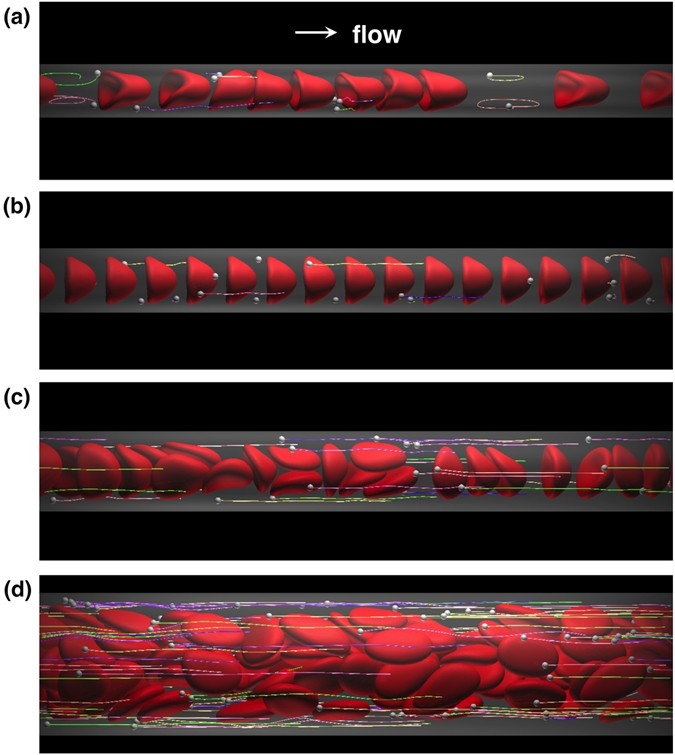
-Capillaries
-
What are the characteristics of Bolus Flow? (2)
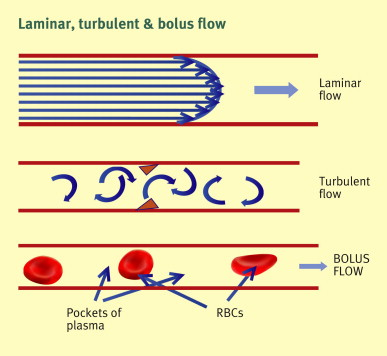
-RBCs have a larger diameter than diameter of capillaries, so move in single file
-Plasma columns are trapped between RBC Uniform velocity, little internal friction & very low resistance
-
What is Reynolds number? (2)
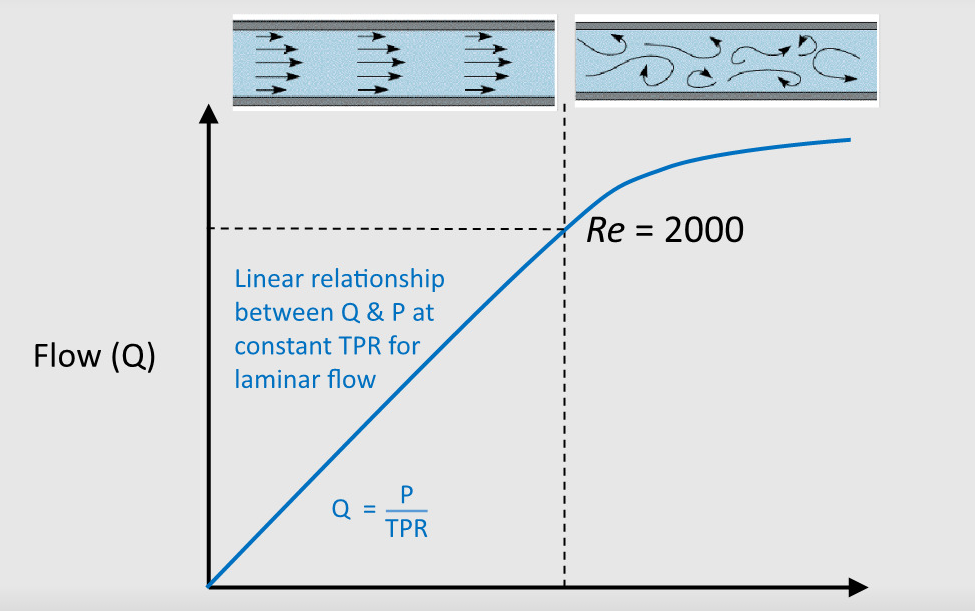
-A dimensionless quantity used in fluid dynamics to predict the flow characteristics of a fluid (such as blood) in a particular environment, such as a blood vessel
-It helps determine whether the flow is laminar or turbulent at a given point
-
What is the equation for Reynolds number?
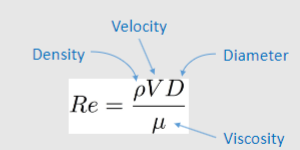
Re = pVD/μ
-
When does Turbulence occur?
When Reynold’s number exceeds a critical value (>2000)
-
What are some physical manifestations of turbulence?
-Bruits
-Ejection murmur
-Increased blood velocity
-
What is pulse pressure?
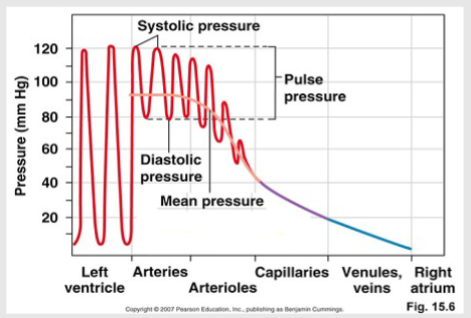
Is the difference between the systolic and diastolic blood pressure readings
-It is a measure of the force exerted by the blood as it is ejected from the heart during systole and the pressure in the arteries when the heart is at rest during diastole
-
What is pulse pressure, a measure of?
It is a measure of the force exerted by the blood as it is ejected from the heart during systole and the pressure in the arteries when the heart is at rest during diastole
-
FILL IN THE BLANKS:
Arterioles are the ___________ ___________ under sympathetic control
Resistance Vessels
-
Arterial blood pressure involves interactions between four key relationships, which are?
-Systolic pressure
-Diastolic pressure
-Pulse pressure
-Mean blood pressure
-
What is systolic pressure? (short answer)
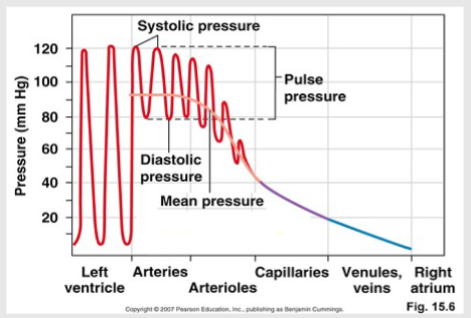
Pressure when relaxing
-
What is diastolic pressure? (short answer)
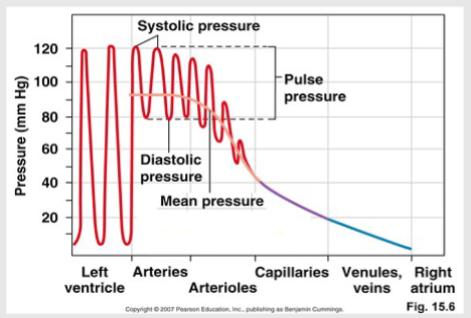
Pressure when relaxing
-
What is pulse pressure? (short answer)
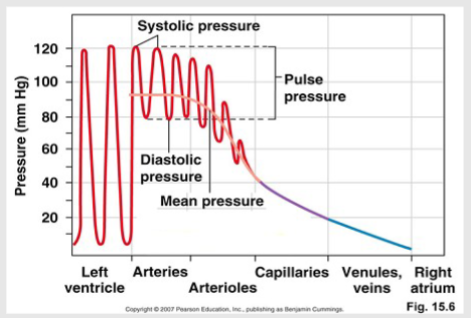
Difference between diastolic and systolic pressure
-
What is mean blood pressure? (short answer)
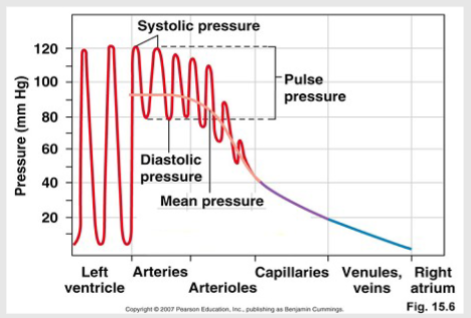
Average pressure
-
During left ventricular systole, how much % of stroke volume is stored in the aorta and arteries as these structures expand. The energy will be stored in stretched elastin.
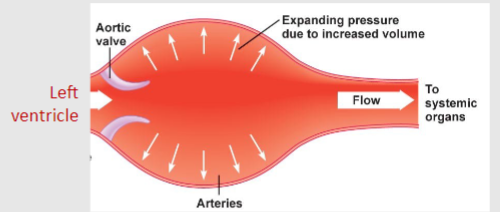
60-80%
-
What happens during left ventricular diastole?
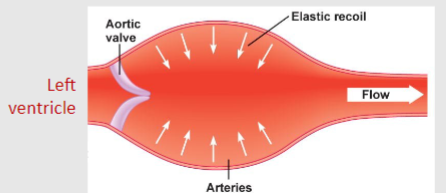
-Energy is returned to the blood as the walls of the aorta and arteries contract.-This sustains diastolic blood pressure and blood flow when heart is relaxed
-
What does Pulse pressure tell you about?
-Stroke volume and-Arterial compliance (stretchiness)
-
What is an equation for pulse pressure that involves compliance?
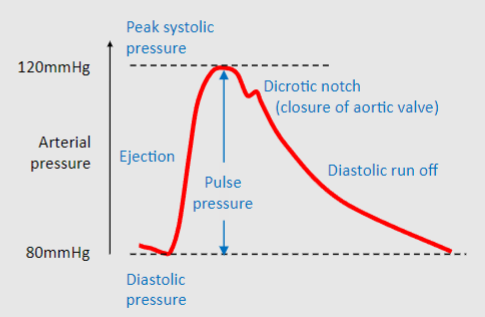
Pulse pressure = Stroke Volume/Compliance
-
If compliance is low, is pulse pressure also low?
NO pulse pressure is high when compliance is low
-
During exercise greater stretch of the arteries as more blood is ejected.
This causes what?
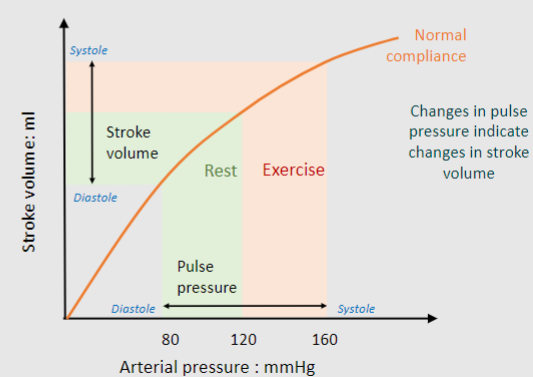
Causes less compliance and less recoil and the difference between systole and diastole increases i.e. pulse pressure increases
-
Compare exercise against rest:
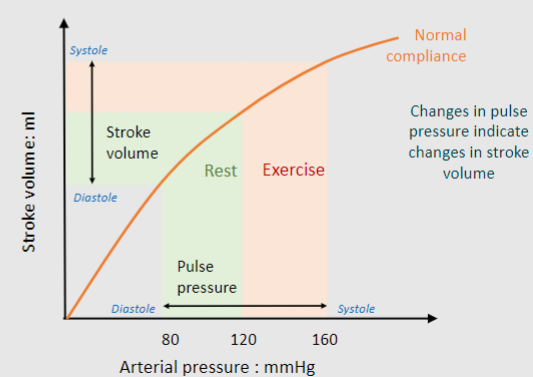
Rest v Exercise• Greater stroke volume• Greater stretch of arteries• Less compliant• Relatively greater systolic pressure
-
How does decreased arterial compliance impact stroke volume?
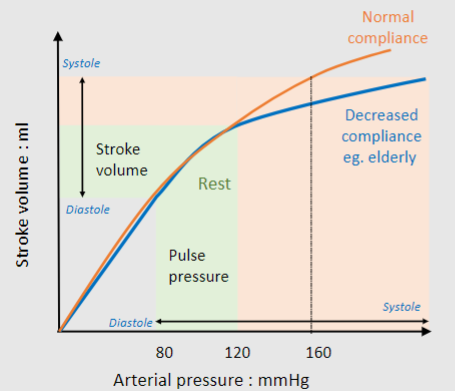
Stroke volume now increases systolic and pulse pressure disproportionally
-
Elderly people have stiffer arteries, this results in decreased....?
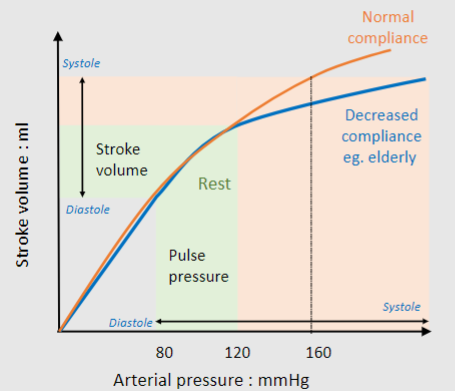
Compliance
-
Pulse pressure becomes more noticable where on the arterial tree? And why?
-Further down the arterial tree
-Because vessels become less compliant
-
What is the complicated way to work out mean blood pressure (BP)?
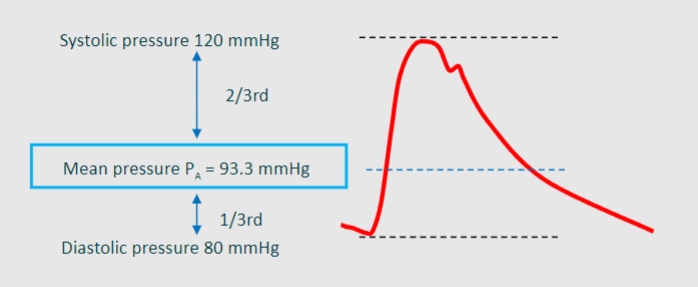
Mean BP = integrate area under curve
-
What is the simpler formula for Mean BP?
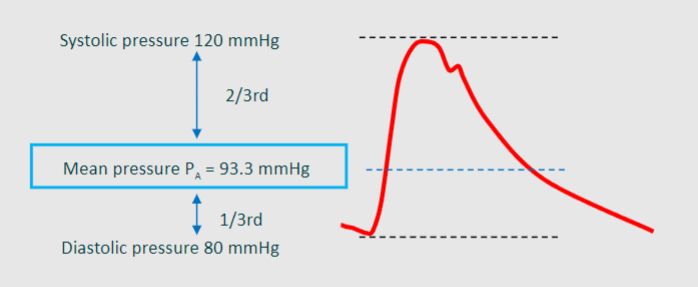
Mean BP = diastolic pressure + 1/3 (pulse pressure)
-
What factors controls mean blood pressure?
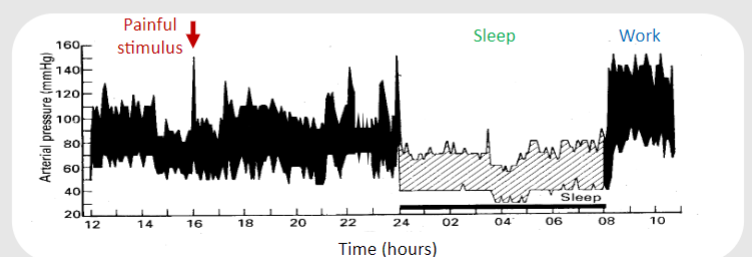
• Age• Disease• Distance along arterial tree• Blood volume – affects SV, CO• Exercise – increased SV, CO• Emotion - stress, anger, fear, apprehension, pain• Wake/sleep - decreases BP 80/50 mmHg

